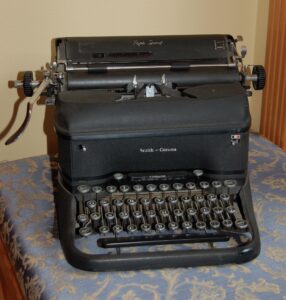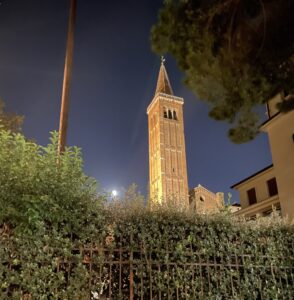Dear Reader
One day I said to my younger daughter, Arwen, “I’d like to write a book that springs off of a story so iconic everyone knows it without having it explained, like Pride and Prejudice or —”
She said, “The Daughter of Romeo and Juliet.”
I said, as does every single person who hears it, “Romeo and Juliet are dead.” I promptly realized that although Romeo and Juliet is a hallowed story, it’s also a work of fiction and fiction is not history. In fact, Shakespeare borrowed the plot of this play and dramatically changed the story while doing so.
As Shakespearean scholar Mary Bly, aka New York Times bestseller Eloisa James, says, “Literary theft was second nature to Shakespeare; he shaped Romeo and Juliet from a poem by Arthur Brooke, who took the plot from a story by Matteo Bandello. Brooke disapproved of Romeo and Juliet’s ‘unhonest desire,’ so Shakespeare didn’t hesitate to shake up that chestnut, just as Christina has done. He would have approved!”
Sitting down, I wrote the first four pages. It was as if Rosie had been lurking in my subconscious for her story to be told. Arwen and I brainstormed key elements of the story—another of her brilliant suggestions was that Rosie would fall in love at first sight as her parents did, and be thoroughly chagrined about it.
Then I put those pages away. Because I’m a working writer and (like Rosie) a sensible person. Who would want to read such an unusual story set in a unique setting?
So while The Daughter of Romeo and Juliet silently bubbled like the yeast in Juliet’s fruit bread, Fate in the shape of #1 New York Times bestseller Susan Elizabeth Phillips took over. She emailed after an exchange of wit between her, New York Times bestseller Jayne Ann Krentz, and me, and said, “You’re funny. You should write romantic comedy.” We exchanged more wit, then I sent the four pages to Susan and Jayne. They more or less demanded I continue, and with their encouragement The Daughter of Romeo and Juliet (as I then called it,) became an entire manuscript.
I sent pages to my agent, Annelise Robey, who called and assured me that she could sell it. Her quote was something like, “After I picked myself up off the floor…” She sold the book to the visionary John Scognamiglio at Kensington Books.
As I wrote, I researched Romeo and Juliet, and the natural first question I googled was, When did Romeo and Juliet take place? To my astonishment, Google announced it took place somewhere in the 14th or 15th century. Two hundred years! In other words, late medieval or early Renaissance Verona. A lot happened in those two hundred years. As I researched further, I discovered that while little is known of Shakespeare’s life, it’s unlikely he ever left the mighty island of England. That makes Verona a mythical romantic destination for him. So following his lead, The Daughter of Romeo and Juliet (now A DAUGHTER OF FAIR VERONA) is a work of fiction based on a work of fiction, set in mythic Verona.
Who am I to dare revise the revered tale of Romeo and Juliet?
I’m a groundling, a.k.a. a plebeian, an audience member at Shakespeare’s Globe who stands in the yard to watch the play. I’m the person for whom he wrote touching flights of romantic poetry, coarse jokes, created characters to be laughed at or feared. I am his audience.
So accept my invitation to join me in the yard to view the further adventures of Rosie Montague, her parents Romeo and Juliet, the gorgeous Lysander and the mysterious Prince Escalus, and all the cast and characters of the A DAUGHTER OF FAIR VERONA.
Want to know more about Rosie Montague and her future adventures and misadventures? On this website specifically created for the series you’ll discover all the answers to your questions, a laugh-out-loud excerpt, clips from the audiobook, the recipe for Juliet’s fruit and nut bread, and photos, videos and commentary from my visit to present day Verona.
Please accept my invitation to enjoy my newsy, funny, Daughter of Montague book-centric mailings with sneak peeks of upcoming stories, contests and all the excitement of launching a new series. Until next time, happy reading!
Warmly,
Christina Dodd
New York Times bestselling author




